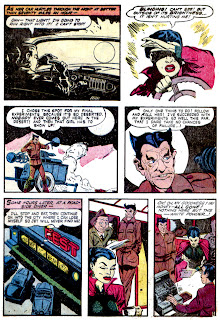Closing out 2012, and staying in the ’50s science fiction mood we’ve set the last couple of days, here are the final two Jet Powers stories from Jet #2, 1951.
They're drawn by the Bob Powell studio and written by Gardner Fox. You Su Shan fans will be happy to know that Su Shan is featured prominently in “House of Horror.” The lead story for the issue can be found at Pappy's #1257.
Tonight, while others revel (for whatever reasons people revel when greeting a new year, which is just a date on the calendar, folks), if past is an indication, I shall be rattling off snores to offset the midnight sounds of my neighbors shooting off fireworks or banging pots. That doesn't mean I won't wish you a happy new year, but be careful and we'll all get back together here on January 2.
More about →
They're drawn by the Bob Powell studio and written by Gardner Fox. You Su Shan fans will be happy to know that Su Shan is featured prominently in “House of Horror.” The lead story for the issue can be found at Pappy's #1257.
Tonight, while others revel (for whatever reasons people revel when greeting a new year, which is just a date on the calendar, folks), if past is an indication, I shall be rattling off snores to offset the midnight sounds of my neighbors shooting off fireworks or banging pots. That doesn't mean I won't wish you a happy new year, but be careful and we'll all get back together here on January 2.


































































